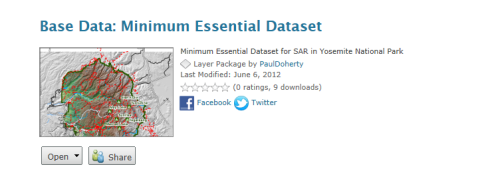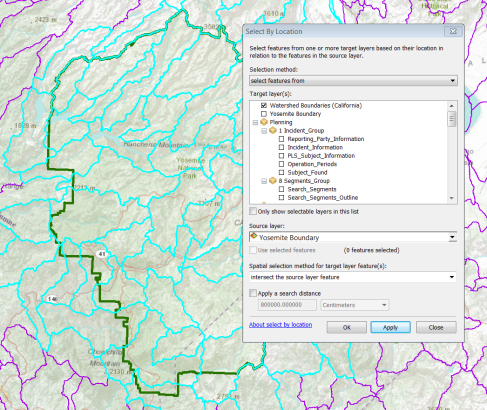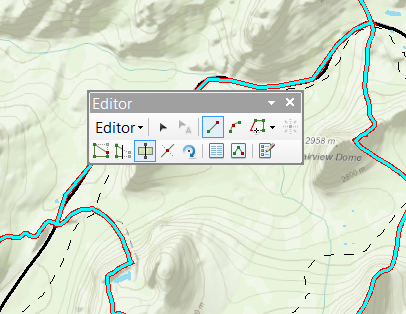By Don Ferguson
dferguson@mix.wvu.edu
Wilderness search and rescue is understood to be an inherently spatial problem which is relative to both the subject and searcher. From the standpoint of the subject, many decisions that are made before and after becoming lost or injured are influenced by the terrain and the environment. These decisions may be either conscious (active) or sub-conscious (passive), and in many ways are driven by both time and space. In WiSAR related to lost persons, it is the decisions that were made by the subject that resulted in them becoming lost. Studies on lost person behavior have allowed searchers to categorize individuals that exhibit similar behaviors when they become lost. These categorical behaviors are observed by plotting Initial Planning Points (Point Last Seen or Last Known Point) and Find locations then extracting information about the terrain and observing trends in the data. When combined with a critical analysis on the influence of terrain and environment (T & E) on a specific individual, geospatial trends in lost person behavior provide valuable information that could reduce the time taken to locate a lost subject.
WiSAR operations that involve a lost subject are plagued
with uncertainty. Where did the subject
leave the trail, or is the object found by a search team an actual clue related
to the lost subject? In order to deal
with the cognitive complexity of all this uncertainty search analysts often
resort to developing scenarios, or hypotheses, to describe what is believed to
have happened to the lost subject. These
scenarios provide justification for applying resources to specific geographical
locations. This is critical as lost
person searches often cover large geographical areas and have few resources
with which to search. Thus a method is required
to assist in prioritizing the search area otherwise the search effort is
limited to merely purposeful wandering which is typically less effective than
targeted searching. Among other
functions, GIS allows analysts a way to “play-out” various scenarios to
determine what is possible and likely.
Several Lost Person
Behavioral models are built directly into IGT4SAR, for example using data
provided in Robert Koester’s text on Lost Person Behavior, concentric rings are
automatically drawn around the IPP based on subject category that represent the
recorded distances to find locations of similar individuals. Similarly, a Track Offset Model provides a
visual representation of how far from a linear feature such as a trail or road in
which the subject was found. The Find
Locations tool provides a means of re-classifying spatial data such as roads,
trails and hydrology vector data along with a land cover surface raster to
display the typical types of features where similar subject were found.
Expanding
on the concept of reclassifying raster data, a similar approach is used to
create a Least Cost Path Surface that represent the potential subject mobility,
or distance travelled, over a period of time.
This model takes terrain features such as slope, access to travel aides
(roads, trails, etc) and barriers (bodies of water) along with land cover to
estimate how far a subject could have traveled over a given period of
time. Analysis of historical data from
Yosemite National Park suggested subjects (predominately hiker category) did
not travel more than 1.5 hours walking distance from the IPP. Know this information could drastically
reduce your search area. See Jared Doke's MS Thesis for more on this study.
Combining these estimates together with specific information
you know about the subject and the local T & E, an analyst can “play-out”
various scenarios to see what makes sense and assist is assigning a probability
of most likely occurrence to the various regions. This ultimately leads to a
Probability Density plot of the search area.
While assigning numerical values in the form of Probability to various
regions of the search area may be slightly misleading as it gives the
impression that a rigorous quanitfied analysis has been done as opposed to the
qualified (Bayesian) analysis, the numerical values allow for easier tracking
of progress within the search area in the form of Probability of Detection and
Probability of Success. While to some
this may sound complex, GIS is well equipped for handling these types of
analysis and these concepts are built into the functionality of IGT4SAR.
To learn more about Integrated Geospatial Tools for Search and Rescue (IGT4SAR) and for using GIS for critical analysis and planning of lost person incidents subscribe to the YouTube videos at:
If you have development skills or are a GIS Specialist and would like to test these tools please see the GitHub Repo: https://github.com/dferguso/MapSAR_Ex






